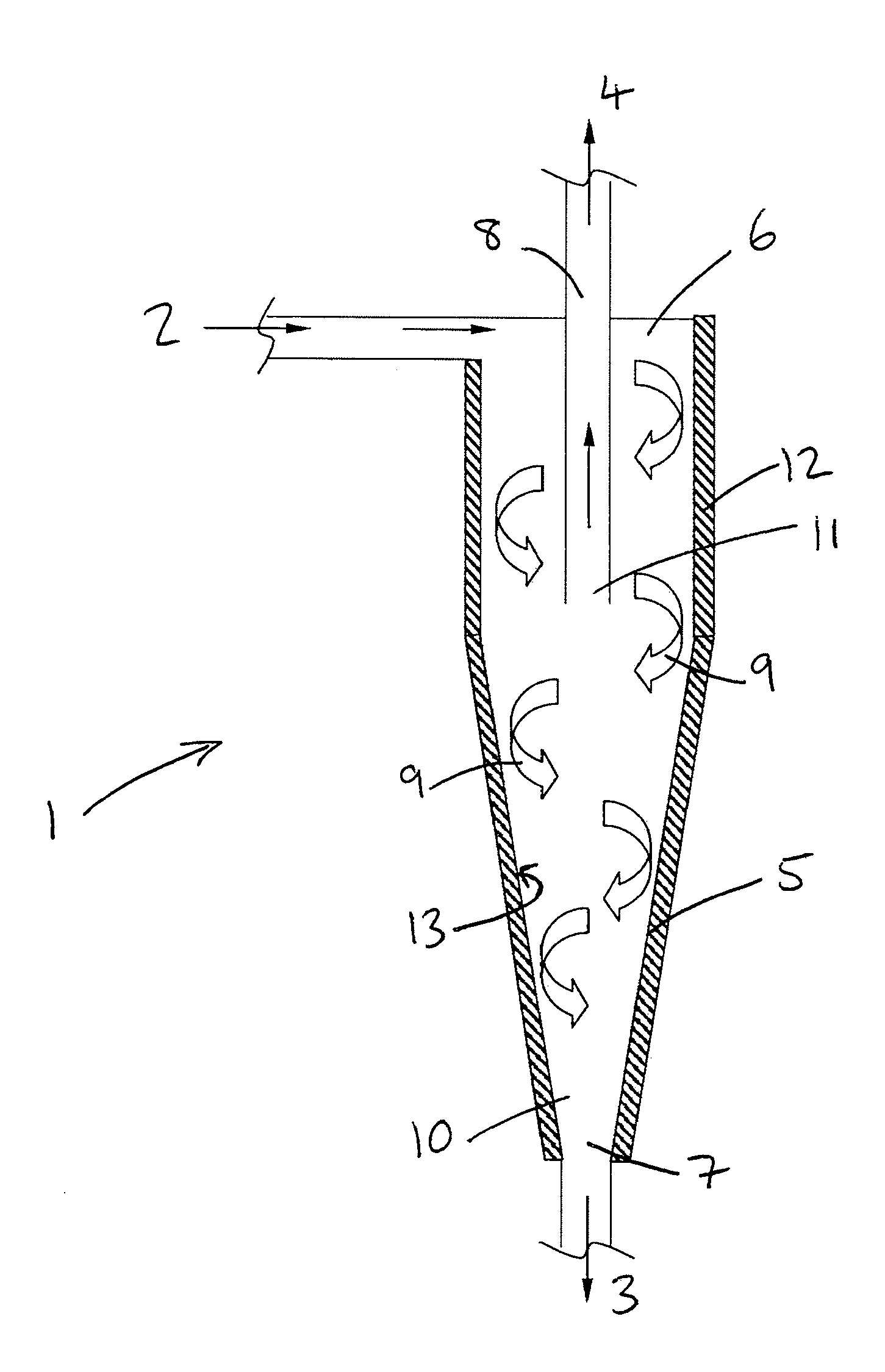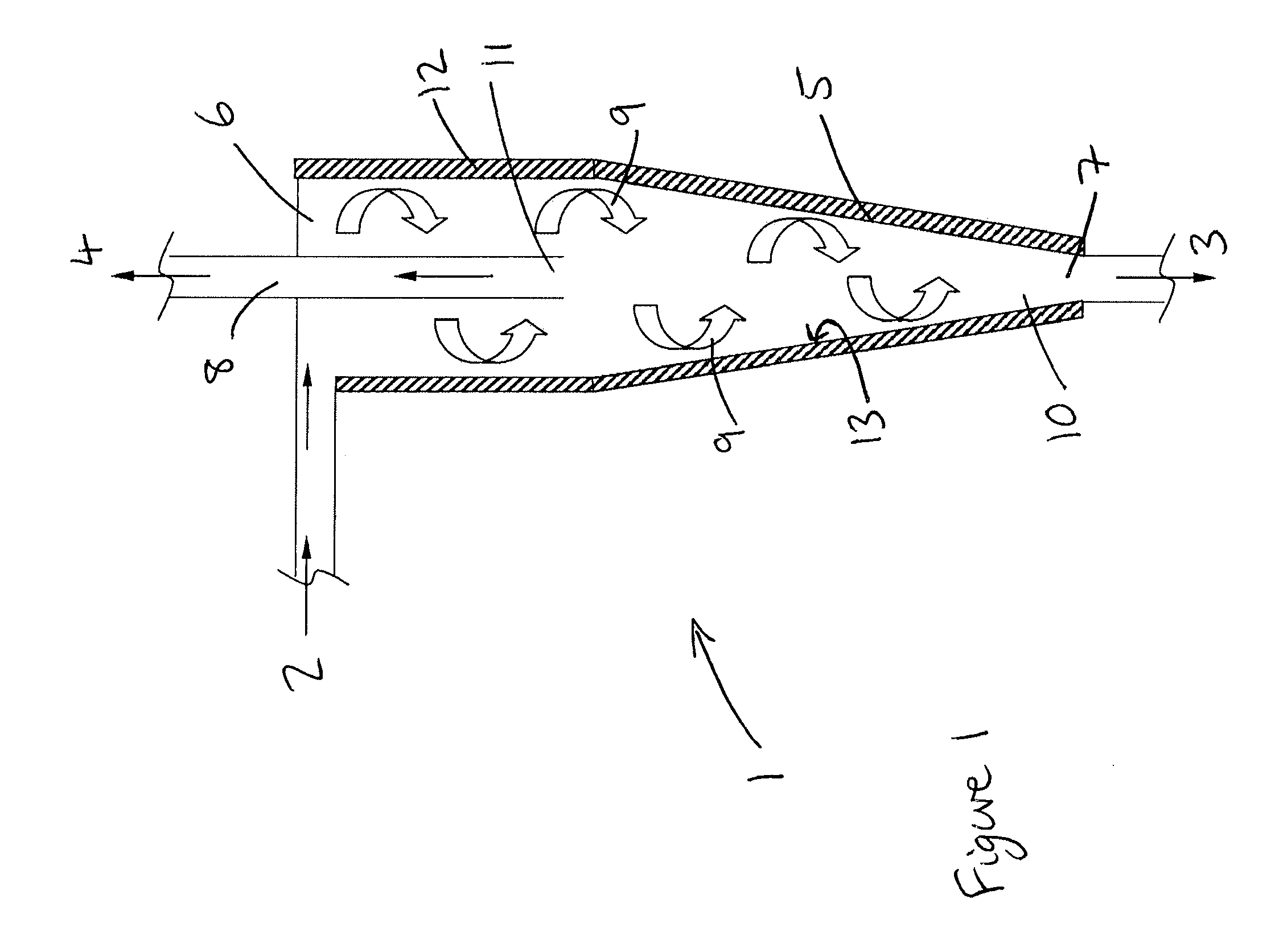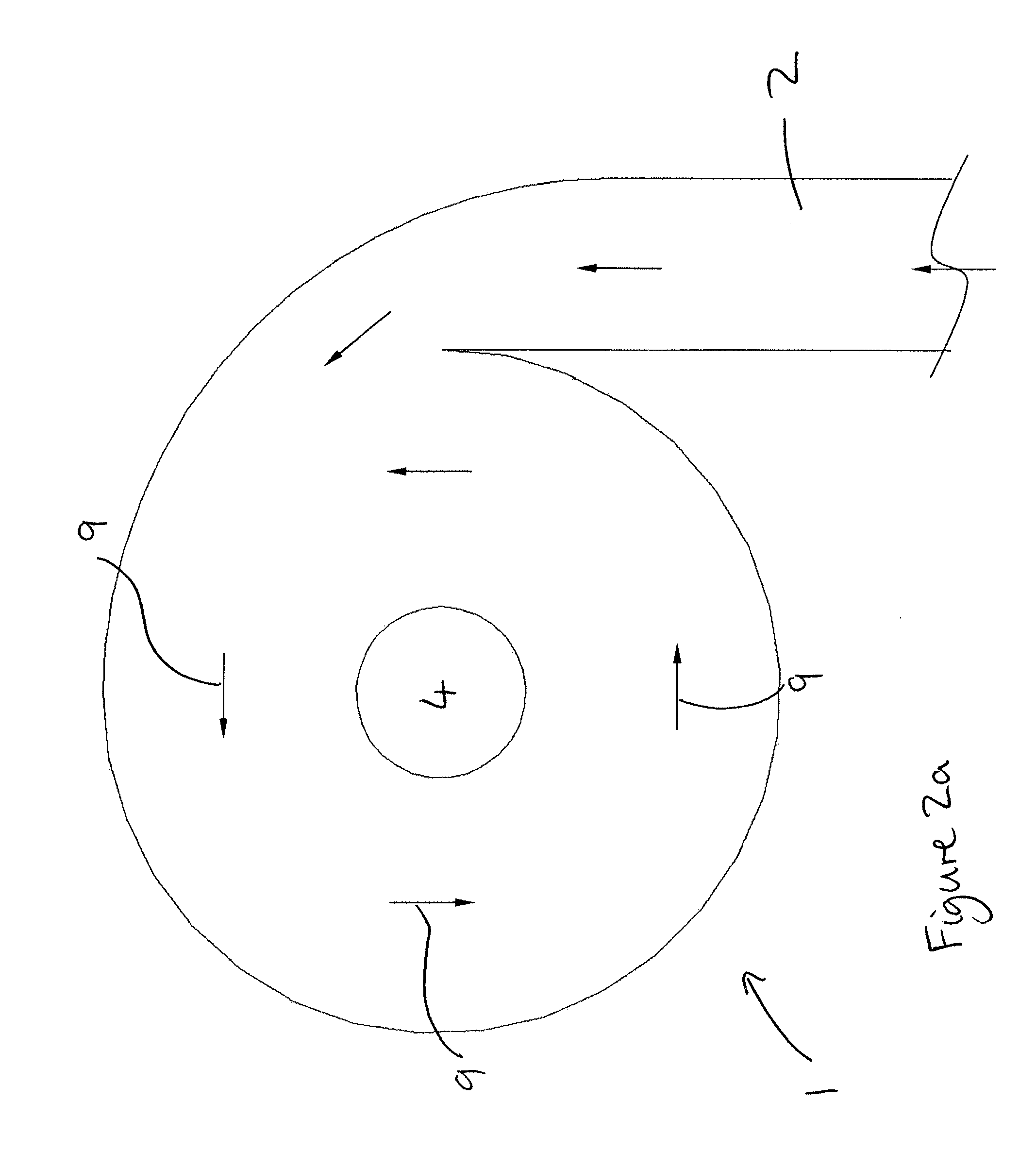Cyclonic separator
a cyclonic separator and separator technology, applied in the direction of centrifugal force sediment separation, water/sludge/sewage treatment, moving filter element filters, etc., can solve the problems of increased maintenance activities, unavoidable water contaminant in fuel, operational delays, etc., to prevent water condensation within the tank, reduce maintenance costs, and reduce maintenance costs
- Summary
- Abstract
- Description
- Claims
- Application Information
AI Technical Summary
Benefits of technology
Problems solved by technology
Method used
Image
Examples
Embodiment Construction
)
[0035]FIG. 1 illustrates schematically a cyclonic separator 1 having an inlet 2, a first outlet 3 and a second outlet 4. The cyclonic separator 1 has a cylindrical upper portion and a conical lower portion. The conical lower portion has a conical housing 5 having a downwardly narrowing, frusto-conical shape that symmetrically extends around a centrally disposed, longitudinal axis. An upper end 6 of the cyclonic separator 1 has a larger diameter and is disposed above a lower end 7 of the cyclonic separator 1 having a smaller diameter. The inlet 2 is disposed adjacent the upper end 6 and the first outlet 3 is disposed adjacent the lower end 7. A pipe 8 extends into the upper portion of the cyclonic separator 1 and is fluidically connected to the second outlet 4.
[0036]FIG. 2a illustrates schematically a top view of the cyclonic separator 1 to show the arrangement of the inlet 2 to the upper end 6 of the cyclonic separator 1. FIG. 2b illustrates the three-dimensional flow within the cy...
PUM
| Property | Measurement | Unit |
|---|---|---|
| density | aaaaa | aaaaa |
| density | aaaaa | aaaaa |
| density | aaaaa | aaaaa |
Abstract
Description
Claims
Application Information
 Login to View More
Login to View More - R&D
- Intellectual Property
- Life Sciences
- Materials
- Tech Scout
- Unparalleled Data Quality
- Higher Quality Content
- 60% Fewer Hallucinations
Browse by: Latest US Patents, China's latest patents, Technical Efficacy Thesaurus, Application Domain, Technology Topic, Popular Technical Reports.
© 2025 PatSnap. All rights reserved.Legal|Privacy policy|Modern Slavery Act Transparency Statement|Sitemap|About US| Contact US: help@patsnap.com



